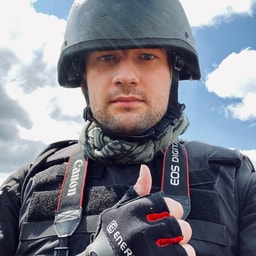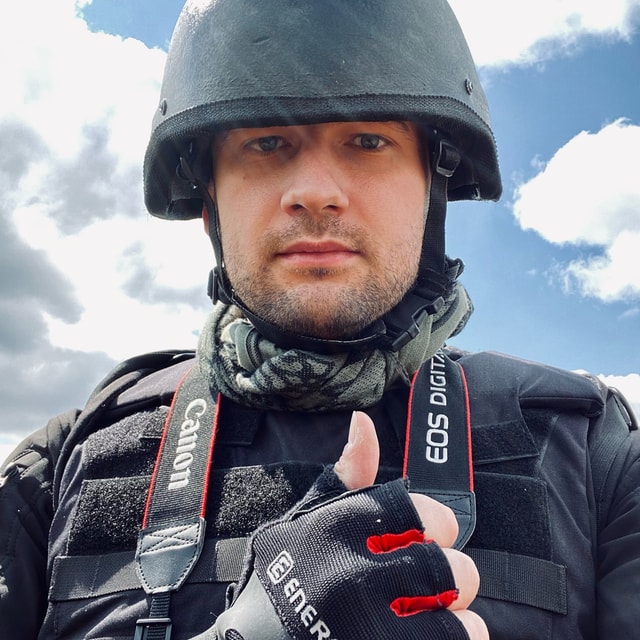Chief pilot of destroyed An-225: ‘We must complete the second Mriya’

HOSTOMEL, Kyiv Oblast — Like so many pilots across the world, Dmytro Antonov, the crew commander of the Antonov An-225 Mriya aircraft, has his own little pre-flight rituals.
The world’s biggest and strongest cargo airplane, the master of many flight records, Mriya required special reverence.
It had its own spirit and temper.
Every time he came to the airfield to take Mriya on a new flight, Dmytro Antonov would rest his hand upon the airframe and gently say hello.
“A careful attitude towards an airplane is essential if you want it to be respectful in return,” he says.
“It's like a living organism, like a big city — something is happening to it all the time. Something dies, something is born.”
Dmytro Antonov observed his old ritual when he got back to the Hostomel Airfield outside Kyiv in early April. But all he could do this time was pay his last respects to a heap of scorched and twisted metal.
The Mriya was dead, lying among the debris of destroyed Russian armored vehicles and trucks.
The legend of the skies did not survive the Russian onslaught on Kyiv. It was ruined in the earliest days of the all-out war at its home airfield of Hostomel, which became a hot battlefield as Russians sought to seize it.
Now that Russia has left Kyiv Oblast following its defeat in the area, its chief pilot is seeking justice.
He wants answers to questions about why the world’s most celebrated aircraft was not protected from the gathering storm of war.
He suspects deadly negligence as the least gruesome reason behind the tragic loss.
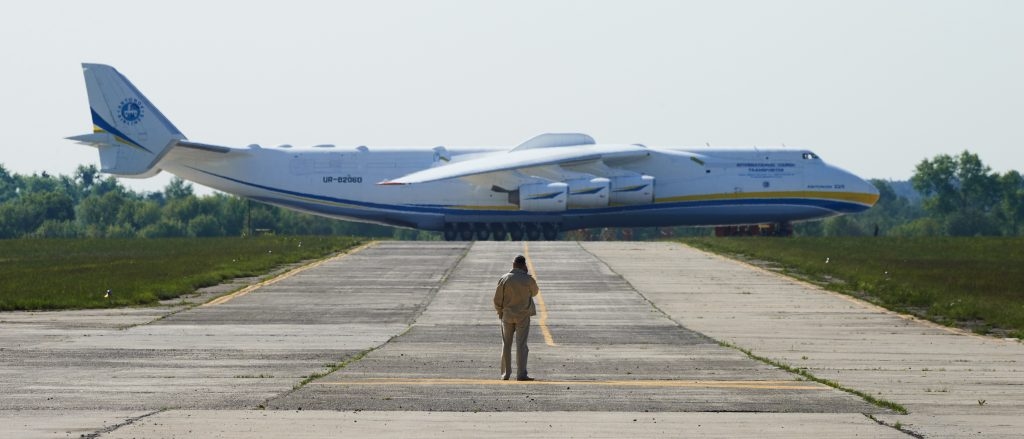
The legend
An-225 Mriya-Ukrainian for “dream” (in the sense of “aspiration”) was built in the late 1980s by the legendary manufacturer Antonov in Kyiv.
At the time the new strategic aircraft was designed as part of the Soviet space program, not intended for commercial cargo transportation. The initial mission was to transport Buran-class aircraft, the Soviet version of space shuttles, on the Mriya’s back, as well as other heavy spacecraft components.
With its maiden flight in late 1988, the Mriya was the world’s heaviest aircraft with the largest wingspan (88.4 meters) in operational service.
Throughout its 30 years in service, it set over 200 world records, including for the heaviest cargo load (253.8 tons) ever lifted in the air.
Its closest competitor, the Boeing 747-8F, is believed to be able to lift nearly 140 tons.
In the 1990s, after the fall of the Soviet Union, the Mriya was reorganized for commercial use with Antonov Airlines, the company’s cargo transportation department accounting for most of the company’s annual revenue.
Mriya was Ukraine’s aviation flagship that required no introduction.
Wherever it arrived in the world, it was met with crowds of mesmerized fans and aviation spotters waiting for hours near runway strips to watch the Mriya’s landing.
The magnificent Ukrainian aircraft inspired dozens of fan groups on Facebook watching every step it made around the world and sharing thousands of photos and videos.
Chief pilot Dmytro Antonov, who, by coincidence, is the namesake of the company that built and operated the aircraft, spent 20 years with the Mriya, including 16 years as the crew commander.
He still calls the magnificent airplane “the queen of the skies.” His YouTube channel attracts aviation fans from nearly 60 countries. For years, the commander has been in touch with hundreds of Mriya fans across the world.
He was extremely proud that the world’s biggest aircraft in operation bears the Ukrainian colors.
In recent years amid the Covid-19 pandemic, the Mriya took scores of trips to deliver medical equipment and test kits around the world.
The downside was that Mriya’s services were expensive.
According to the company, the price tag for hiring it for cargo transportation started at $1 million. Many, therefore, questioned the economic expediency behind such a huge and powerful aircraft that was never designed for making money in the first place.
Dmytro Antonov has a good memory of the Mriya’s last mission in early February.
On Feb. 2, it departed for China’s Tianjin to bring nearly 90 tons of Covid-19 tests to Denmark. There was nothing special about the flight, except for a giant crowd of Mriya fans gathered near the Billund Airport in central Denmark, with many waving Ukrainian flags.
The Mriya was to get back home to Hostomel. Many in the aviation community were curious if the Mriya was bringing weapons — the threat of Russia’s all-out war was looming, and the Danish government had just made statements about its readiness to send defensive weapons to Ukraine.

The catastrophe
But then, the worst happened.
Capturing the Hostomel Airfield, just 25 kilometers southwest of Kyiv’s downtown, was one of Russia’s key goals in its “shock and awe” operation against the Ukrainian capital.
In the early hours of Feb. 24, dozens of Russian Kamov Ka-52 and Mil Mi-8 helicopters rushed from the north to Hostomel at a very low altitude above the Dnipro River, bringing hundreds of elite enemy paratroopers.
Their task was to gain a foothold in the airfield at the capital’s gate and secure a key point of arrival for many more Russian Illiyshin Il-76 transporters bringing even more troops to attack Kyiv.
The strategic airfield harboring Ukraine’s most precious aircraft had become the scene of World War II-scale fighting, which included tanks and artillery strikes.
The hasty Russian assault on Hostomel would ultimately fail.
Read also: Ukraine’s old air defense proves unexpectedly effective in combat
While Russia managed to claim control of the airfield after fierce and costly fighting, it was rendered unusable for large aircraft. Another attempt to gain a foothold in another airfield close to Kyiv, in Vasylkiv to the south, also failed.
Drone footage from the contested Hostomel Airfield in late February revealed what many feared most — the heavily damaged Mriya hangar was burning.
The global aviation community was shocked.
According to an early Ukrainian version, the Mriya was destroyed in the battle in the earliest days by a Russian helicopter strike. Many other versions also claimed it was a Ukrainian artillery strike that rendered the airfield unusable.
At any rate, the parking aprons at the Antonov, after a month of fighting and Russia’s presence, turned into a scorched cemetery of destroyed Russian armored vehicles and trucks, as well as airplanes and helicopters, Russian and Ukrainian.
The battle resulted in nothing for Russia, except severe casualties.
On March 31, having failed to achieve any progress in the Battle of Kyiv and facing a potential disaster, exhausted Russian forces simply left the Hostomel Airfield, along with the whole of northern Ukraine.
That’s when Dmytro Antonov managed to get back to his airfield to see what happened to the Mriya.

The aftermath
What he saw was a tragedy.
Along with the An-225 Mriya, the airfield was also home to a lot of other aircraft, including those operated by Antonov Airlines.
Fully operational An-74 and An-26 transporters were destroyed. An An-22 Antei, which was waiting for its propellers on the day of the attack, was severely damaged.
Heavily damaged was also an An-124 Ruslan, one of the company’s heavy workhorses, stationed in a hangar for maintenance checks.
Following his return to Hostomel, Antonov was “99% sure” most, if not all aircraft were deliberately destroyed by Russians on the ground.
“Just judging from bullet holes in every aircraft, I can tell that it did not happen in combat,” the pilot says.
“A person was standing nearby with an automatic rifle in his hands and spraying gunfire upon airplanes.”
The An-26, the An-28, and the An-22 were almost surely destroyed or damaged on purpose, the pilot believes.
“There’s an entry hall from the left and an exit perforation at the same height on the other side, a pretty big one,” he says.
“What could that be? Was that a missile incoming from above? No, there was someone who fired a round with an RPG (anti-tank weapon) at a distance of 20 meters, piercing the aircraft.”
“Or if there’s a hole in an aircraft roof a meter by meter in size, with fuselage skin twisted outward — it was just some bastard who somehow shot at it from an RPG or an underbarrel grenade from inside the aircraft.”
When it comes to the Mriya, Dmytro Antonov is not completely sure it was the result of a deliberate Russian action rather than hostilities, although there may be a pattern.
Anyway, as he says, an expert investigation is expected to shed light on Mriya’s tragic death.
https://www.youtube.com/embed/AuQGvi_R8zg
Negligence
Having recovered from the shock, the aviation community started asking questions.
On March 19, Dmytro Antonov released a video on YouTube, in which he directly accused Antonov Airlines' top management team of having failed to save the Mriya and other aircraft from the Russian attack.
According to the pilot, as far back as Jan 26, NATO Support and Procurement Organization (NSPA) and the Alliance itself officially suggested that the Antonov redeploy its air fleet, along with all personnel and equipment, to the Leipzig Airport in Germany.
NATO suggestion was due to fears of Russia’s major war, which Western intelligence agencies and media had been warning Ukraine about for months.
In Leipzig, Antonov Airlines has an overseas affiliate, the Antonov Logistics SALIS, which renders strategic transportation services for NATO.
The Mriya and other aircraft could have also been redeployed to other airports, such as Poland’s Rzeszow. But the carrier’s management failed to make a timely order and did not respond to NATO’s call, the chief pilot said.
Moreover, as Dmytro Antonov told the Kyiv Independent, most of the aircraft in Hostomel, except for one An-124 Ruslan, were fully operational and ready to take off at command.
Following the last flight after February 5, the company in Hostomel unfastened one of Mriya’s six D-18T engines to be used with a Ruslan. Starting from Feb. 18, technicians were ready to bring the engine back to the Mriya, and they did it on Feb. 23.
In other words, by Feb. 23 at 10 p.m., nearly 7 hours before Russia’s attack, the Mriya was ready to leave Hostomel.
Meanwhile, amid tense anticipation of a Russian assault, Ukrainian authorities on that night installed concrete blocks and vehicles on runway strips in Dnipro, Zaporizhia, and Kharkiv as obstacles to Russian military transport aircraft.
The Hostomel airfield was not closed — at midnight, a Ruslan took off for a routine commercial flight to Malaysia, Dmytro Antonov says.
But, no order was given to the Mriya.
Read also: New phase in war opens up as Ukraine defeats Russia in battle of Kyiv
“Draw your own conclusions,” Dmytro Antonov says.
“Negligence is the least strong possible explanation behind what happened. The ongoing investigation will show if it was negligence or something else.”
The pilot’s public statements about what happened have triggered outrage.
The Antonov Company’s leadership on March 24 responded with an extremely emotional and personal open letter signed by 130 out of nearly 600 of the carrier’s personnel.
The company said Antonov Airlines had done extensive work to prepare for the air fleet’s relocation to Leipzig. ate on Feb. 23, the Mriya was prepared to leave the next morning, “but early on the day of Feb. 24 caused now well-known horrific adjustments”
“And even though all staff members involved in preparations were at their working places in the morning, takeoffs were rendered impossible due to the civilian flight ban,” the company said.
“Our personnel were being fired upon by Russian landing forces, with some killed, wounded, or seized. And now we see that the one who was at home throughout this difficult time and who did nothing to ensure the company’s survival is making angry public statements saying that there are enemies all around and that he’s the only one who knows the whole truth.”
The company accused Dmytro Antonov of backstabbing, failing to do anything to help save the Mriya, and trying to play “the splendid knight” to score hype points on the internet.
Moreover, according to the pilot, it later became known that on March 19, the day he published the video, he was dismissed as a deputy director for flight training and then fired without notice on March 25.
Dmytro Antonov says that in reality giving an order to the Mriya to leave was far beyond his official competence. Moreover, he says, many of the open letter’s signatories did so in a bid to avoid conflict with the company, later explaining themselves to the respected pilot.
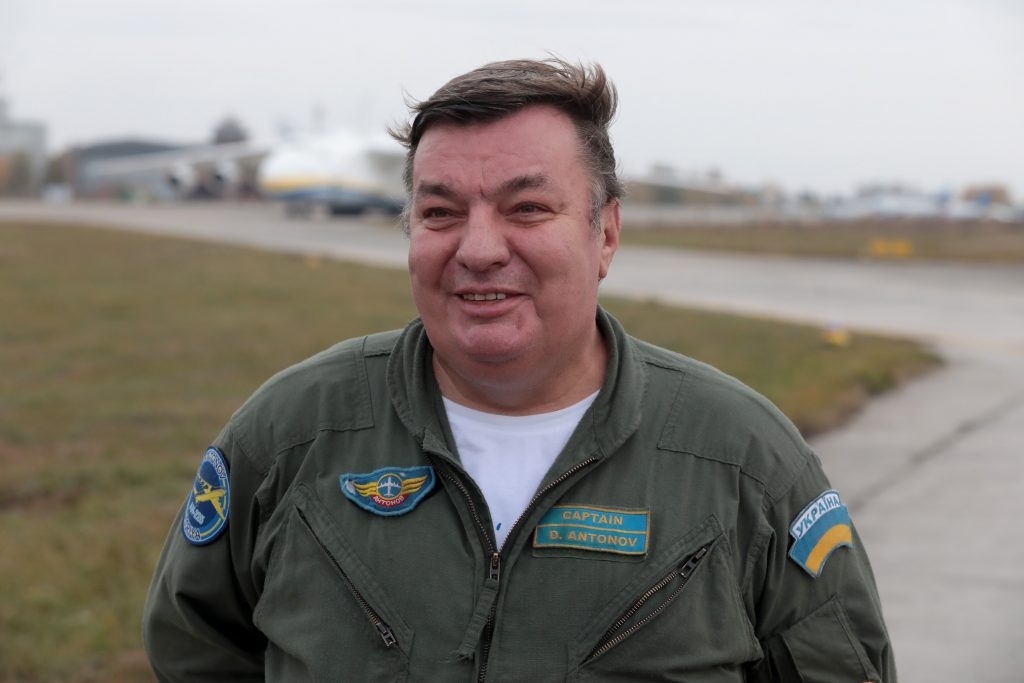
A new dream
The scandal, in which the aviation community strongly supported Dmytro Antonov, suddenly resulted in key officials being dismissed by the UkrOboronProm, the state-owned defense company that oversees the Antonov Company.
On April 4, UkrOboronProm fired Serhiy Bychkov as the Antonov Company chief, replacing him with Yevhen Havrylov as acting director-general. The Antonov Airlines department chief Mykhailo Kharchenko was also replaced by Vadym Budzinskiy.
The new leadership, according to Dmytro Antonov, immediately dissolved all injunctions and reinstated him as a high-ranking pilot.
With the war ongoing, the Mriya is dead, and the Hostomel Airfield inoperable for an indefinite amount of time, the company is looking for a new breath of life.
It still has five An-124 Ruslans that landed in Leipzig having completed their pre-war commercial flights. One more Ruslan remains in Kyiv, according to Antonov.
Leipzig is the company’s new hub now.
Despite all the sadness over the Mriya, Antonov says he’s going to go on flying.
“I am still a functional pilot after all,” he says.
“Of course, I will continue carrying out flights with our Ruslans and administering our flying personnel. I’ll get to know them and look them in the eyes. We will work to resurrect the band.”
But despite everything, there’s still a hope that the Mriya may still get resume service, in some form.
According to Antonov, an expert commission is to find out if at least three of the Mriya’s D-18T engines can still work with Ruslans, which they also fit.
Moreover, shortly following the disaster, UkrOboronProm said Mriya could be potentially restored. The price tag could reach over $3 billion and at least 5 years of work, according to the corporation.
On March 24, the Antonov Company established a new charity to raise funds from the global aviation community to resurrect the Mriya. Given the aircraft’s fatal damage, the technical possibility of that remains an open question.
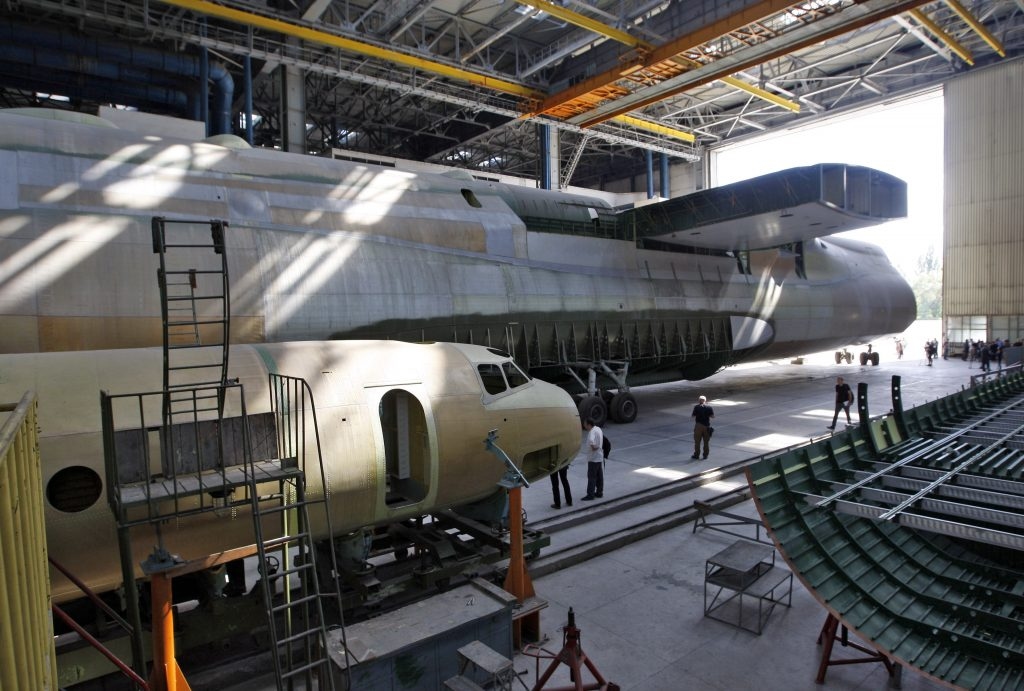
But there’s another thing: the Mriya’s yet unborn twin sister.
The Soviet An-225 program envisaged the construction of one more aircraft of the same type. For years, the “second Mriya” has remained at the Antonov facilities in Kyiv, completed by nearly 80% and waiting for its day that never comes.
Completing the second An-225 is now a new hope, though it requires many millions of dollars and commercial-wise lacks promise.
Dmytro Antonov insists the old forgotten project must be completed: There can’t be a Ukraine without a Mriya.
“It’s not just an aircraft, it’s a true dream to aspire to,” he says.
“It’s not a question of commercial expediency. Is there any sort of commercial expediency in installing a monument? When Americans created their Saturn V rocket, they spent a terrible amount of money, but they put humans on the Moon.
“Ukraine also deserves to have a dream — such as an aircraft like this. I think the probability of the second Mriya to be completed is very high.”

